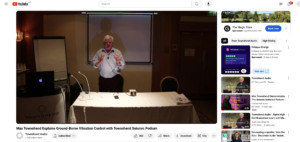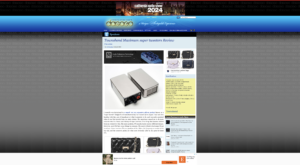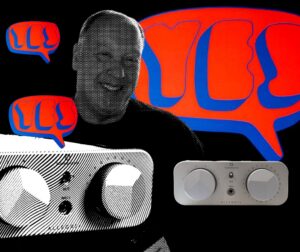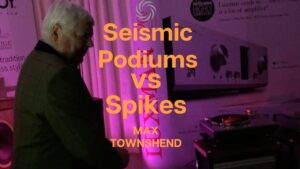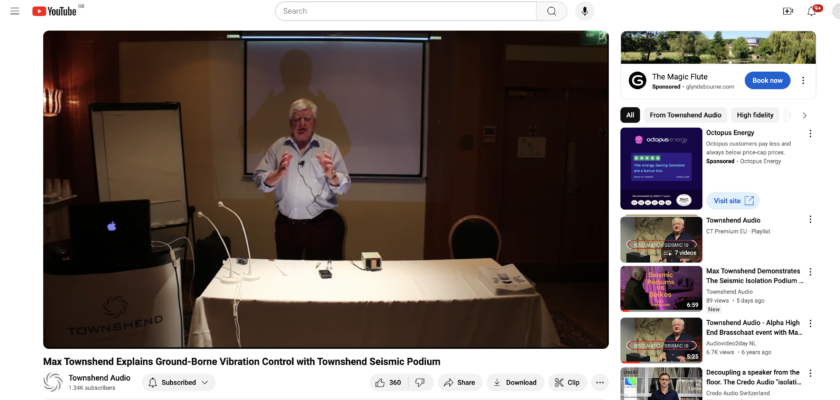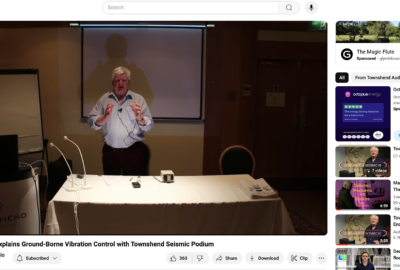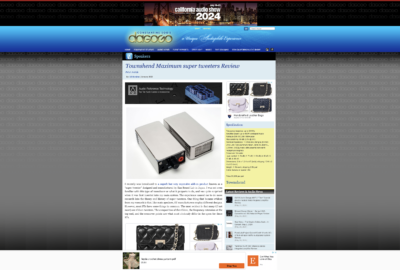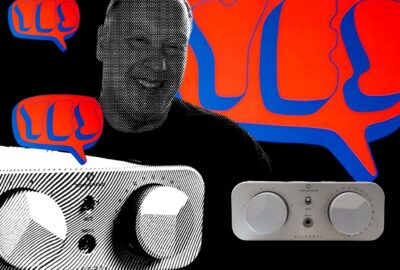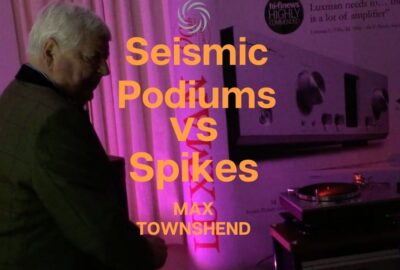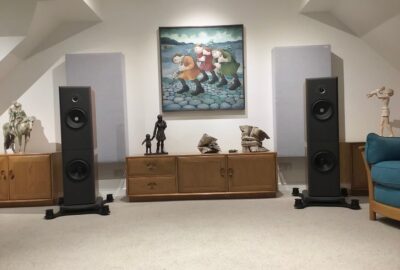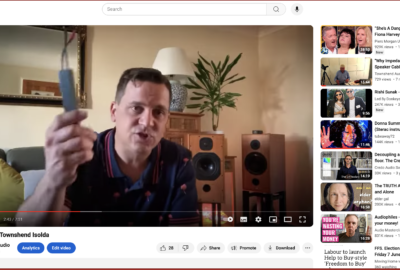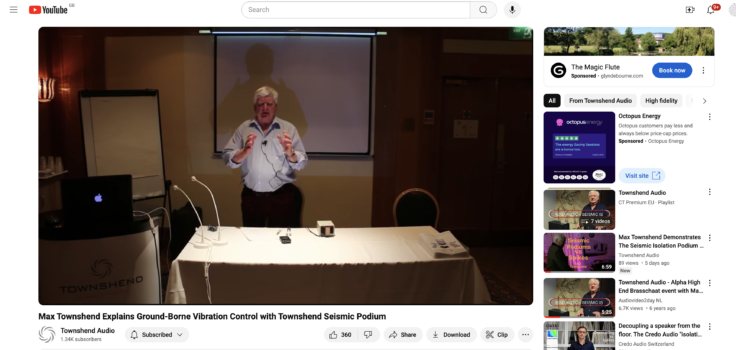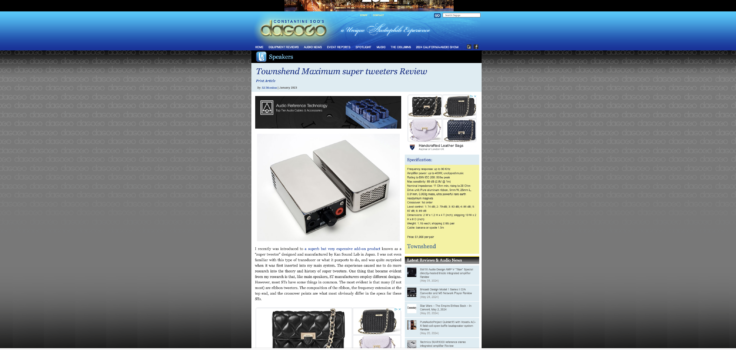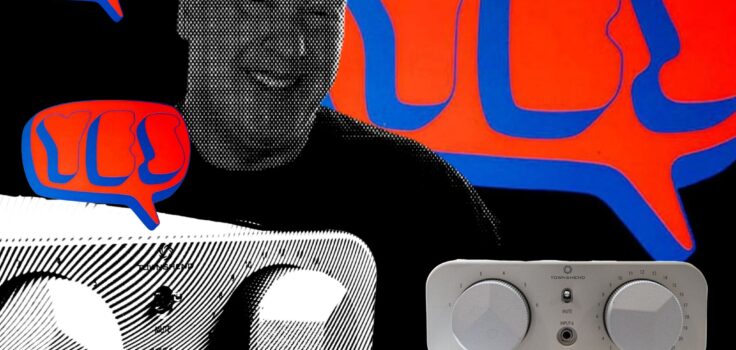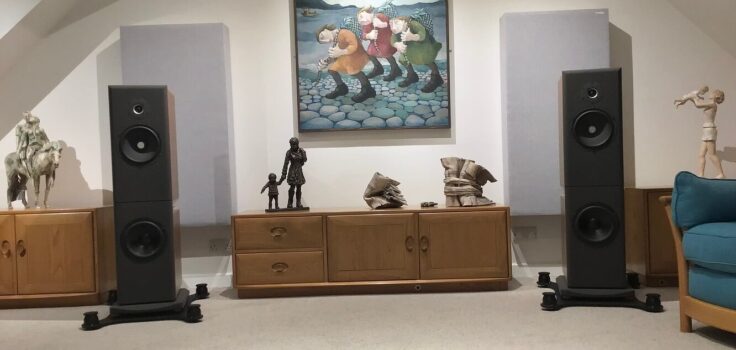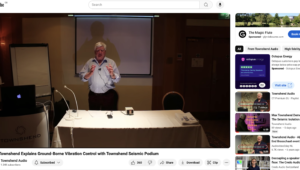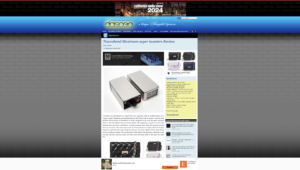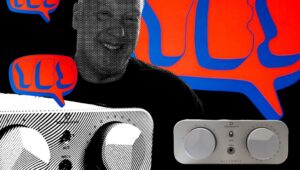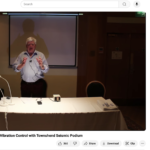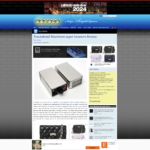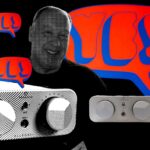Impact of Environmental Vibrations on Hi-Fi Audio Performance
This article consolidates the insights provided by Max Townshend in this mini lecture on the impact
Maximum Supertweeter Review from Dagogo –
In high-fidelity audio, the pursuit of sonic perfection knows no bounds. Audiophiles constantly look
Vinyl Purveyor and Audio Guru Chris Harris Auditions the Townshend Audio Allegri + Preamplifier: A Micro Review
As an audiophile and vinyl enthusiast, I’m always looking for that next piece of gear that can
Discovering the Magic of Townshend Seismic Podiums: A Live A/B Test Experience
In the world of high-fidelity audio, subtle differences can have a profound impact on our listening
Naim Forum: Isolation of HiFi components from vibration
Hi, had my Podiums at least a couple of years, supporting Kudos Titan T88s weighing around 66kg. The
Ditton Works: Maximum Supertweeter video Review
In his YouTube review, Ditton evaluates the performance of the Maximum Supertweeters when paired wit
The Transformative Power of Townshend Isolda Cables: A Customer’s Perspective
As audiophiles, we are constantly on the lookout for that next upgrade, the one that will elevate ou
My review of Townshend F1 Fractal Speaker cables on Audiogon Forum
My review of Townshend F1 Fractal Speaker cables First, I just want to make it clear I have no affil
Hi-Pigs’s Janine Elliot Reviews The Isolda Cable
Max Townshend, a renowned figure in the audio industry, has consistently pushed the boundaries of au
Impact of Environmental Vibrations on Hi-Fi Audio Performance
This article consolidates the insights provided by Max Townshend in this mini lecture on the impact
Maximum Supertweeter Review from Dagogo –
In high-fidelity audio, the pursuit of sonic perfection knows no bounds. Audiophiles constantly look
Vinyl Purveyor and Audio Guru Chris Harris Auditions the Townshend Audio Allegri + Preamplifier: A Micro Review
As an audiophile and vinyl enthusiast, I’m always looking for that next piece of gear that can
Discovering the Magic of Townshend Seismic Podiums: A Live A/B Test Experience
In the world of high-fidelity audio, subtle differences can have a profound impact on our listening
Naim Forum: Isolation of HiFi components from vibration
Hi, had my Podiums at least a couple of years, supporting Kudos Titan T88s weighing around 66kg. The
Ditton Works: Maximum Supertweeter video Review
In his YouTube review, Ditton evaluates the performance of the Maximum Supertweeters when paired wit
The Transformative Power of Townshend Isolda Cables: A Customer’s Perspective
As audiophiles, we are constantly on the lookout for that next upgrade, the one that will elevate ou
My review of Townshend F1 Fractal Speaker cables on Audiogon Forum
My review of Townshend F1 Fractal Speaker cables First, I just want to make it clear I have no affil
Hi-Pigs’s Janine Elliot Reviews The Isolda Cable
Max Townshend, a renowned figure in the audio industry, has consistently pushed the boundaries of au
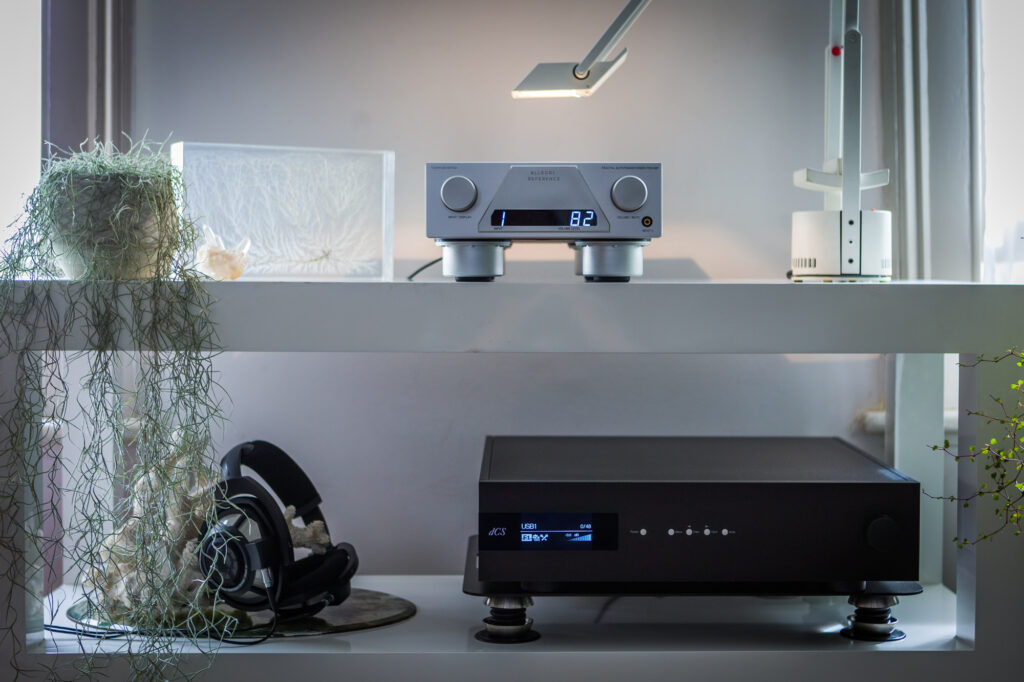
Sign up for our weekly newsletter
Get more travel inspiration, tips and exclusive offers sent straight to your inbox
Discover
Latest Stories
Impact of Environmental Vibrations on Hi-Fi Audio Performance
This article consolidates the insights provided by Max Townshend in this mini lecture on the impact of environmental micro-vibrations on hi-fi sound quality. It outlines

